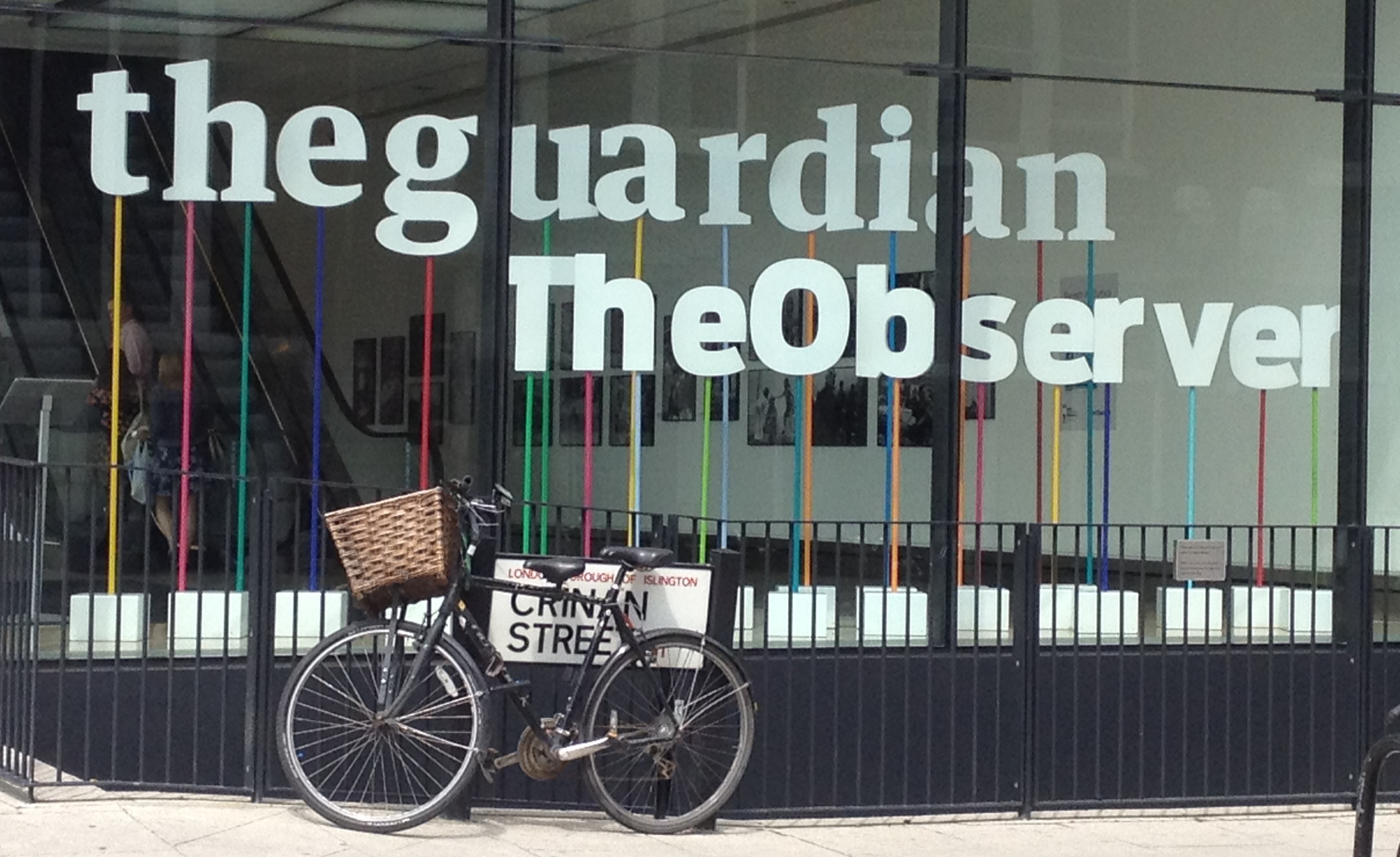 Professor Ellen P. Goodman is a Professor of Law at Rutgers University and Co-Director of the Rutgers Institute for Information Policy & Law. Her research interests include media policy, spectrum policy, free speech, and the use of information as a policy tool. Here she argues that existing media and plurality policies need to evolve to account for new complexities in the converged media ecology. An emerging policy of informational justice would, for starters, focus on digital intermediary transparency and accountability in the exercise of algorithmic authority.
Professor Ellen P. Goodman is a Professor of Law at Rutgers University and Co-Director of the Rutgers Institute for Information Policy & Law. Her research interests include media policy, spectrum policy, free speech, and the use of information as a policy tool. Here she argues that existing media and plurality policies need to evolve to account for new complexities in the converged media ecology. An emerging policy of informational justice would, for starters, focus on digital intermediary transparency and accountability in the exercise of algorithmic authority.
Old media pluralism paradigms fit poorly with new digital media challenges. At the same time, the essential undertaking of media pluralism remains vital: confronting scarcities in the production and distribution of communication bearing on vibrant democratic cultures. Older paradigms focused on the availability of “voices” – usually in the form of linear programming — over platforms that could accommodate relatively few. The scarce resource was distribution.
Today, while distribution constraints remain, access questions are more complicated. We have moved from the carriage/non-carriage binary to more contextualized questions of how platforms make content available, under what terms, and to whom. Moreover, there are new kinds of scarcities beyond access, including attention and trust. The small arena that media pluralism once played is now much larger. Consideration of what structures and rules support diverse media content cannot be separated from broader informational justice questions about privacy, data collection and access, digital literacy, and infrastructure.
New distribution scarcities
Much is new in digital networks, but the old problem of distribution bottlenecks persists. Indeed, that is what the net neutrality debate is about. In a two-sided market where carriers can charge content and application (or “edge”) providers for preferential distribution, not all voices will get equal access. Edge providers that are able to strike preferential deals with carriers will have the loudest voices. These deals take the form of paying for faster delivery (e.g., Netflix), or by paying for zero-rated delivery that doesn’t count against mobile data caps (e.g., Facebook). As long as distribution is rationed in some way, there will be legitimate concerns about media pluralism as it relates to access to the pipe.
But that’s where old media pluralism ideas loosen their grip. The digital ecosystem is much more complex and dynamic than the old systems of distribution. Edge providers seeking access to digital platforms are themselves platforms for many and diverse voices. Preferential treatment of a platform like Facebook – for example with zero-rate distribution — has a mixed pluralism impact. If the alternative for low-income subscribers is no mobile Internet, it’s a pluralism boon. If the alternative is more content providers at the same price, then the preferential deal diminishes speech.
It is this complexity that is causing European policymakers to consider special rules for “specialized services” and U.S. policymakers to consider a hybrid proposal that avoids common carrier treatment of broadband carriers. In both cases, the move towards complicated net neutrality rules seeks to preserve room for consumer-friendly special access deals while also preserving space for open access.
Similar complexities carry over into issues of concentration. The old approach to media pluralism was uniformly hostile to media mergers where they reduced the number of distinct voices. Opponents of the merger of American cable companies, Comcast and Time Warner, have argued that this combination would have that effect. But it’s a complicated argument about the course of negotiations between the carriers and “over the top” platforms like Netflix and Amazon, which are themselves the purported winners over competing voices in a non-neutral network. In this battle of the platforms, where power is ultimately derived from a combination of scale and monetization of personal data, it’s not clear where the vectors of communicative influence point. Evolving theories of media pluralism will have to account for this uncertainty and complexity.
New scarcities of attention and trust
Distribution constraints are now only a piece of the informational justice picture. If media pluralism is ultimately about fostering credible, quality, and broadly representative media, then pluralism theorists have to look beyond the pipe to new forms of scarcity. Scholars like Natali Helberger are focusing more intensely on the power of digital intermediaries to make certain media content salient. Tarleton Gillespie has written extensively about the power of platforms to create hierarchies of online content. Kate Crawford questions whether the old aspiration for platform neutrality is doomed, given that an algorithm is never agnostic in the promotion of speech. And James Grimmelman argues that editorial choice is inherent in any filter, inevitably rendering search a “speech engine” with consequences for regulation and public discourse.
Algorithmic authority and algorithmic magnetism
I think of the power of platforms over speech as falling in two categories: algorithmic authority and algorithmic magnetism. Platforms exercise algorithmic authority by promoting and demoting content based on their assumptions about relevance and intentional experiments with user attention. More than 1.3 billion people log into Facebook at least monthly and 20% of traffic to news sites comes through its pages. The algorithm governing Facebook’s newsfeed thus has tremendous editorial force. Journalist Matthew Yglesias notes that the sharing algorithm favors stories with “the key triggers of emotion, personalization, and identity-formation.”
On top of this bias is intentional jiggering. In the months leading up to the U.S. 2012 elections, Facebook experimented with American voting habits by increasing the visibility of “hard news” items on the newsfeeds of 1.9 million users. According to a Facebook data scientist, this change “measurably increased voter turnout.” Jonathan Zittrain has argued that this practice and others constitute “digital gerrymandering” and Zeynep Tufekci has called them “computational politics.”
Google of course has similar powers. In an attempt to mollify big content producers, it has adjusted its search algorithm to demote copyright-infringing content. The company touts this power as benign because it refuses requests for non-copyright reasons, including reputational (e.g., an individual’s attempt to nix insulting blogposts) or financial (e.g., a movie studio’s attempt to nix a bad review). The important fact is that the power exists, and the public must take Google’s word for the benignity of its exercise. The same goes for Google’s practice of demoting the PageRank of news content that carries native advertising – a practice that affects the user experience and the business models that news organs pursue. The opacity of this algorithmic authority is perhaps as significant as its strength.
Even if they were entirely “neutral,” algorithms would affect content by creating incentives for producers desperate to attract scarce consumer attention. Algorithmic magnetism, exerted on speakers, shapes content in the battle for visibility. It may well be that this magnetism is no more powerful than other incentives always have and will be. But it’s something to look at. For example, content-producers maximize “clickbait” to succeed in social and link engines of visibility. As Mathew Ingram notes, digital platforms and social media are ruthlessly efficient in satisfying short-term consumer desires for titillation and entertainment. Interestingly, Facebook has tried to respond to the very clickbait it fosters by demoting viral sites that produce “listicles”, in favor of more “newsworthy” sources. Here is the deployment of algorithmic authority to combat algorithmic magnetism, again in the dark.
Policy responses
The media pluralism agenda has always had an uneasy relationship with consumer desires. The late C. Edwin Baker developed important insights into how media markets may manufacture the consumer desires that they then satisfy. Whatever the operation of the market, it is also the case that media pluralism proponents have always desired products and experiences that deliver non-market positive externalities. That has not changed.
So far, when it comes to digital intermediaries, most proposals along these lines involve voluntary commitments. Ethan Zukerman has called for a “serendipity engine” that would help users to encounter media they are not seeking and may not be relevant according to standard algorithmic metrics. Jonathan Zittrain has proposed that intermediaries assume the role of “information fiduciaries,” keeping audit trails of personal data use, allowing users to experience non-personalized presentations of information, and forswearing any personalization designed to advance the intermediary’s own ideology. No one calls these proposals “media pluralism” fixes, but that is what they are.
A more robust conception of informational justice might help us to situate media pluralism concerns in today’s digital platform controversies. These include policy contests involving net neutrality, privacy, big data, spectrum allocation, and industry structure. What the media pluralism debates of old taught was that potential for abuse and foreclosure was as important as the exercise of that power. Bringing these insights to bear in the digital environment would help make the case, at least, for more transparency and accountability among intermediaries about the exercise of algorithmic authority and preferential access deals.
This article gives the views of the author, and does not represent the position of the LSE Media Policy Project blog, nor of the London School of Economics.




